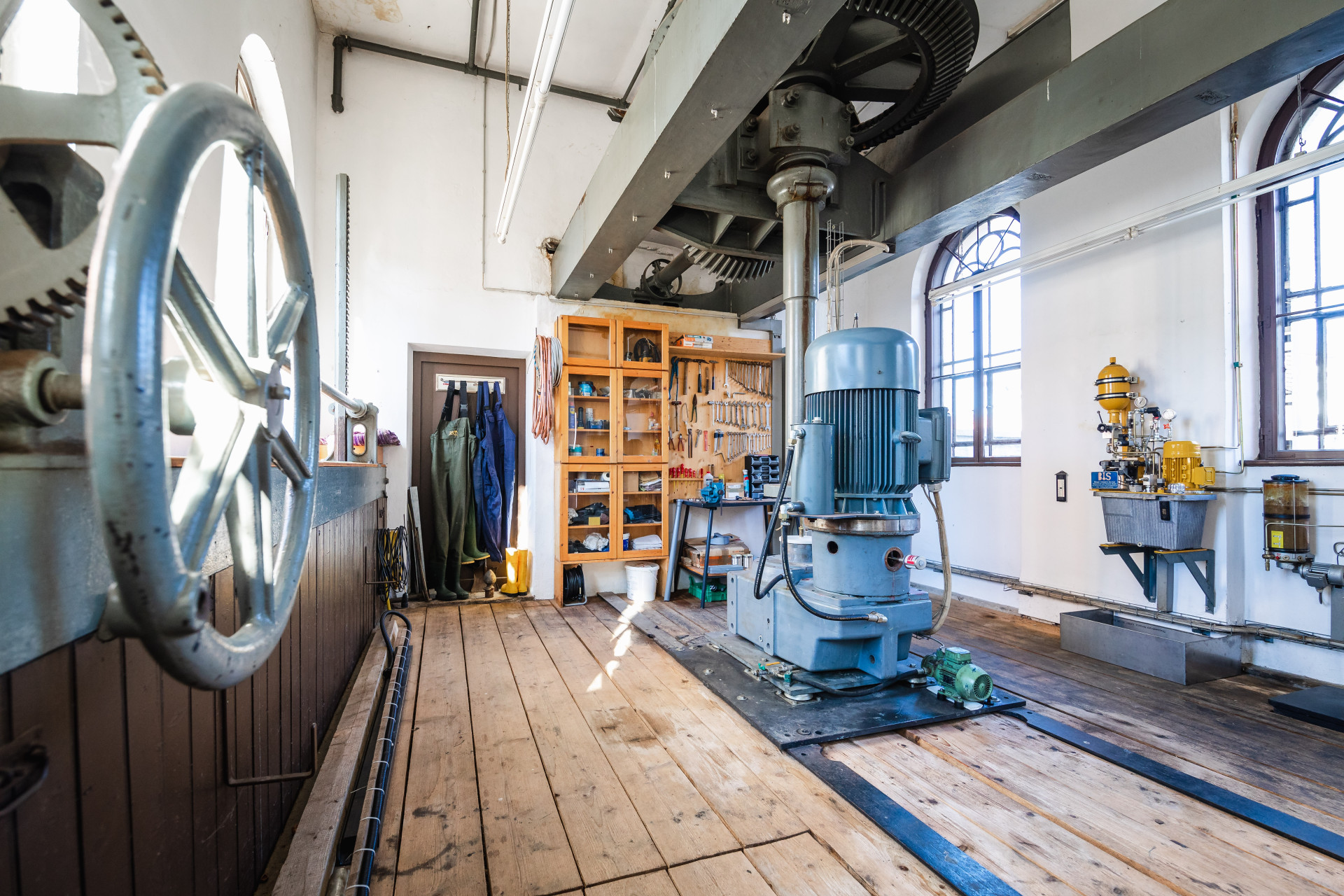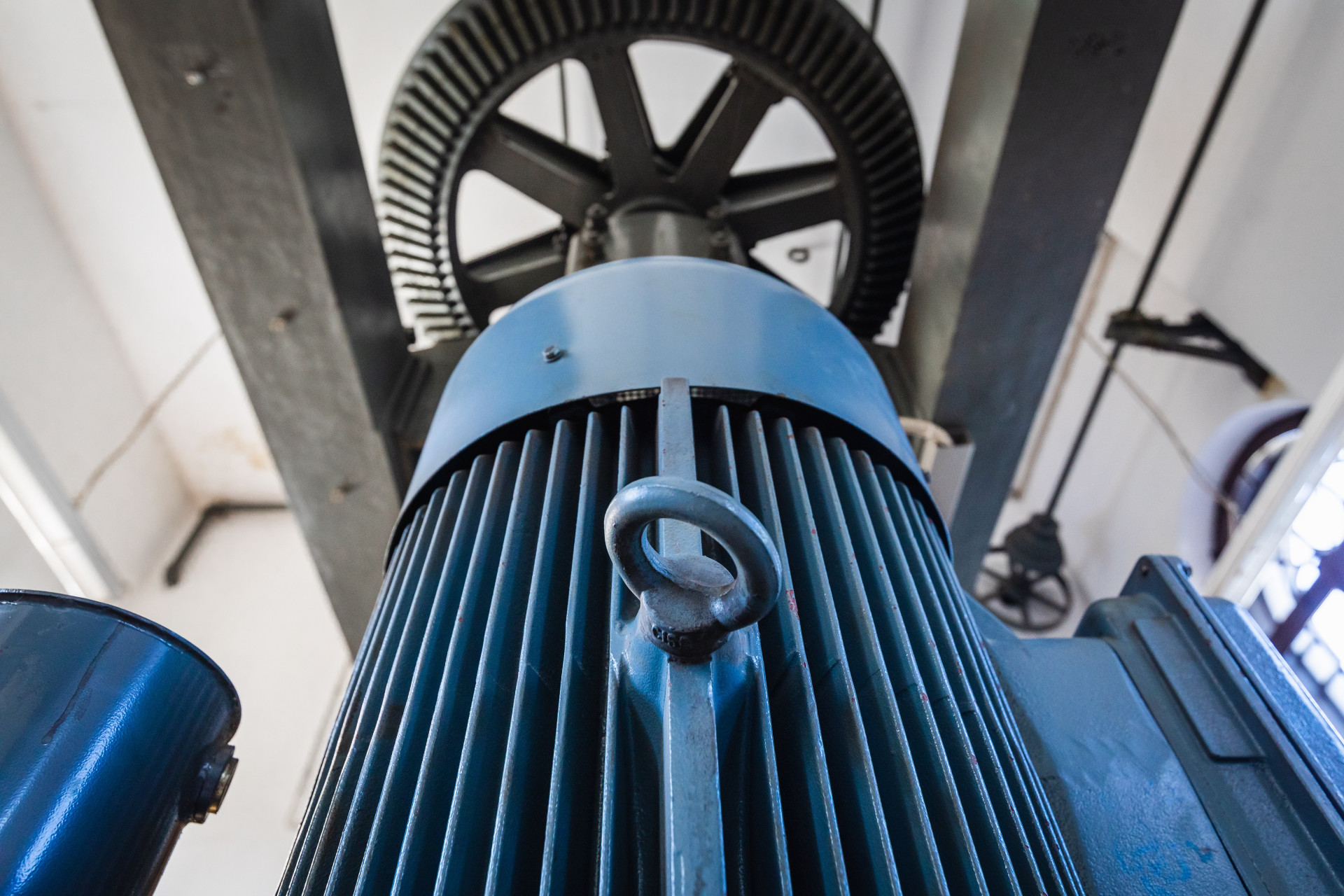
14
Power plant at the Singold
The small power plant has been in continuous operation since 1887. It was originally built to drive the transmissions of the Göggingen doubling mill and yarn factory, but later, like the other two earlier power plants, generated electricity for the factory.
Building history and description
- Hydroelectric power plant, still in operation, at Singold on the grounds of Amann & Söhne GmbH & Co. KG Augsburg, Göggingen, Apprichstraße
- Construction of the power plant 1886-1887
- Destruction of the neighboring factory by fire in 1908
- Rehabilitation of the Francis turbine and installation of a new generator 2006
- direct spatial and temporal proximity to the power plant on Fabrikkanal (also power station of the ZNFG)
- Engineers Widmann and Telopac
- single-storey solid construction with pitched roof over rectangular ground plan
- roof lantern (not preserved today)
- plastered facade
- Round arched window with decorated cast iron sprouts
- Etched ornamental glazing in the windows
Use and purpose
- Hydroelectric power station of the twisting and sewing thread factory Göggingen (ZNFG)
- from 1957 merger with Zwirnerei Ackermann
- 1994 Acquisition by Ackermann & Söhne, yarn production at the site until today
- Power transmission via transmission drive and gears on the looms
- Technical Equipment:
- One Francis-Turbine with vertical wave
- Gear-driven transmission drive
- a generator of the Schorch family
- bears witness to the importance of the former mill river at Göggingen for industrialization
- Turbine houses converted later into electricity generating hydropower plants
- Power plant as an object of the UNESCO world heritage stands for:
- Further development from small-scale to industrial scale
- Further development from a simple waterwheel to a highly effective turbine
- early replacement of mechanical transfers of hydroelectric power in the region by electrification
- Early replacement of local hydropower and electricity generation by decentralized run-of-river power plants
- Use of renewable energies benefits the environment,
- "Augsburg tradition" of sustainability as a global role model
Authenticity and unique features
-
Decommissioning of the power plant from the 1970s until 2006
-
preserved historic turbine
-
no longer receive the original generator
-
Energy generation is fed into the public grid today
-
Power station as an industrial archeological monument of the suburban area
-
After the merger of ZNFG with the twisting mill Ackermann in 1957, it became part of the largest sewing thread manufacturer in Europe
-
Providing technical development to a well-preserved, exemplary hydroelectric power plant



